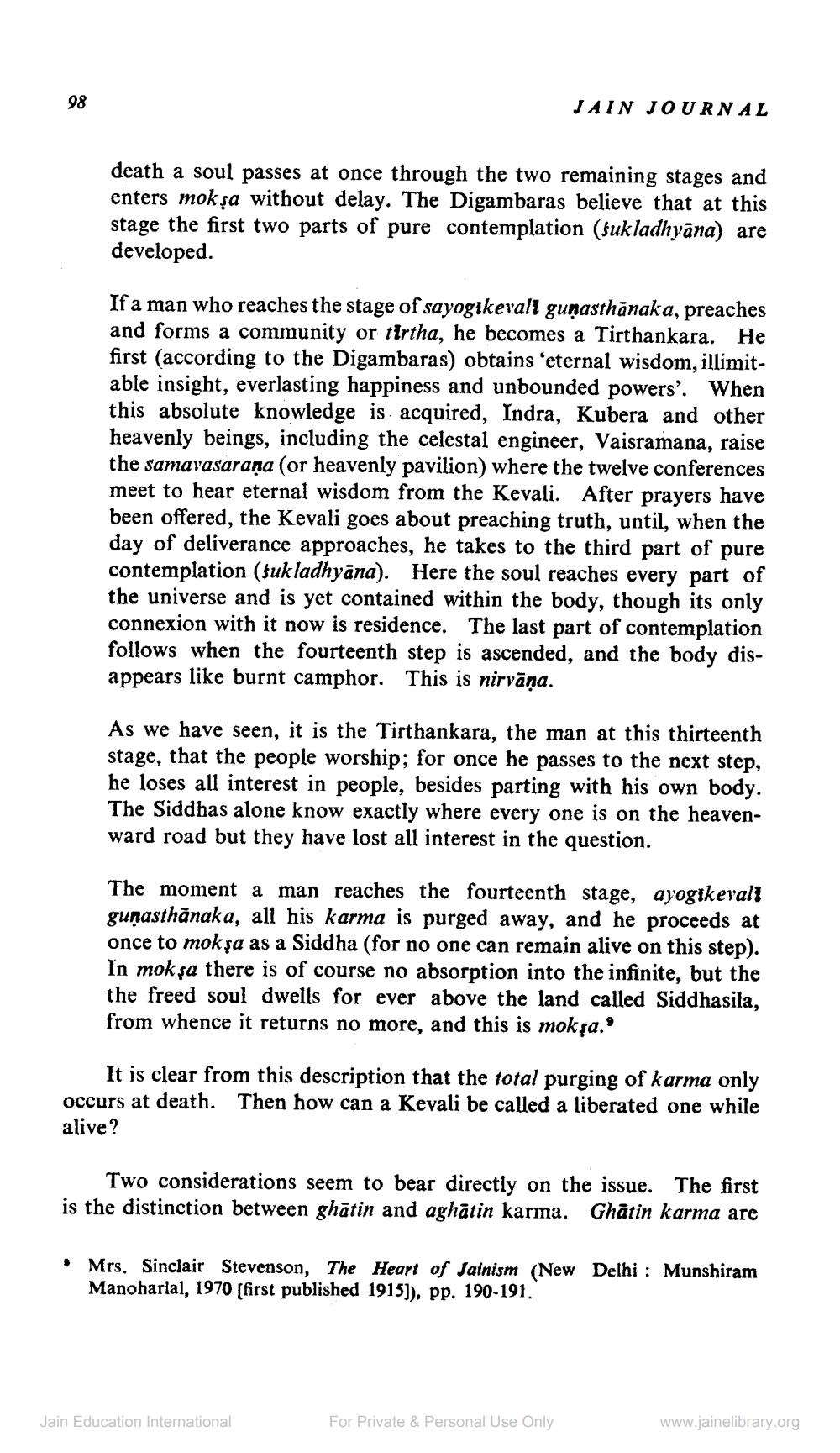________________
98
death a soul passes at once through the two remaining stages and enters mokşa without delay. The Digambaras believe that at this stage the first two parts of pure contemplation (sukladhyana) are developed.
JAIN JOURNAL
If a man who reaches the stage of sayogikevali guṇasthānaka, preaches and forms a community or tirtha, he becomes a Tirthankara. He first (according to the Digambaras) obtains 'eternal wisdom, illimitable insight, everlasting happiness and unbounded powers'. When this absolute knowledge is acquired, Indra, Kubera and other heavenly beings, including the celestal engineer, Vaisramana, raise the samavasaraṇa (or heavenly pavilion) where the twelve conferences meet to hear eternal wisdom from the Kevali. After prayers have been offered, the Kevali goes about preaching truth, until, when the day of deliverance approaches, he takes to the third part of pure contemplation (sukladhyāna). Here the soul reaches every part of the universe and is yet contained within the body, though its only connexion with it now is residence. The last part of contemplation follows when the fourteenth step is ascended, and the body disappears like burnt camphor. This is nirvāṇa.
As we have seen, it is the Tirthankara, the man at this thirteenth stage, that the people worship; for once he passes to the next step, he loses all interest in people, besides parting with his own body. The Siddhas alone know exactly where every one is on the heavenward road but they have lost all interest in the question.
The moment a man reaches the fourteenth stage, ayogikevalt guṇasthanaka, all his karma is purged away, and he proceeds at once to mokşa as a Siddha (for no one can remain alive on this step). In mokşa there is of course no absorption into the infinite, but the the freed soul dwells for ever above the land called Siddhasila, from whence it returns no more, and this is mokşa."
It is clear from this description that the total purging of karma only occurs at death. Then how can a Kevali be called a liberated one while alive?
Two considerations seem to bear directly on the issue. The first is the distinction between ghatin and aghatin karma. Ghatin karma are
⚫ Mrs. Sinclair Stevenson, The Heart of Jainism (New Delhi: Munshiram Manoharlal, 1970 [first published 1915]), pp. 190-191.
Jain Education International
For Private & Personal Use Only
www.jainelibrary.org




